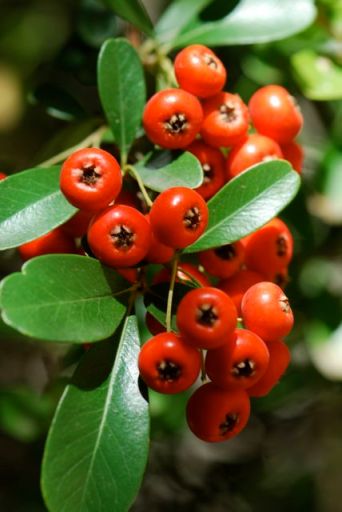Just a quick reminder that the Great Backyard Bird Count is coming up next weekend, Feb. 15-18, 2013. 
The bird count is a fabulous example of a citizen science project that is child-friendly. The idea to to count the birds in your backyard or elsewhere for at least fifteen minutes, and then submit your results online. The website has all the instructions, as well as birding lists for your region, etc. This year there is also a free .pdf poster of common birds to help with identification.
If you get a chance, take a look at the findings from last year, too. The animated map showing the records for the introduced Eurasian collared dove spreading over North America since 2000 is very cool (it is the lower map).
While you are thinking of birds, consider making a simple feeder to supply food or learn about growing a wildlife garden, including some plants that provide food for birds.

For example, many birds eat pyracantha berries.
The Lab of Ornithology has ideas for urban bird gardens.
About.com has design information for bird-friendly gardens. (This site has numerous ads).
Birds and Blooms has instructions for how to make a simple bird feeder.
For more ideas, see “Observing Birds” from last year.
Let us know what birds you find in your neighborhood!
Books with more information about birds:
Keep an eye out for the children’s book Look Up! Bird-Watching in Your Own Backyard by Annette LeBlanc Cate, coming out next month (March 12, 2013)

Reading level: Ages 8 and up
Hardcover: 64 pages
Publisher: Candlewick (March 12, 2013)
ISBN-10: 0763645613
ISBN-13: 978-0763645618
More recent great books about birds for children can be found at the bottom of this post.
Adult books with projects that can work with children:
Cooking for the Birds: Recipes to Attract and Feed Backyard Birds by Adele Porter

Paperback: 88 pages
Publisher: Adventure Publications (September 13, 2010)
ISBN-10: 1591932629
ISBN-13: 978-1591932628
For the Birds: Easy-to-Make Recipes for Your Feathered Friends by Editors of Birds & Blooms

Reading level: Ages 18 and up
Spiral-bound: 120 pages
Publisher: Readers Digest;Â Spiral-bound edition (April 1, 2010)
Language: English
ISBN-10: 1606521314









